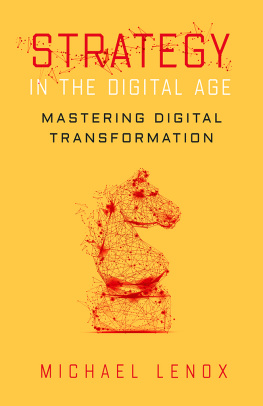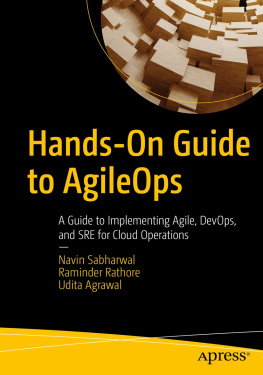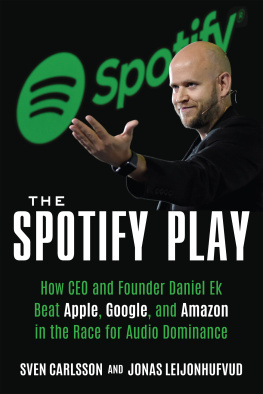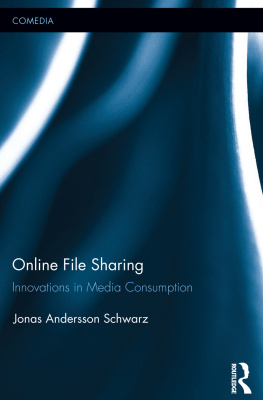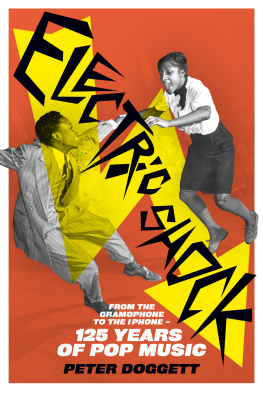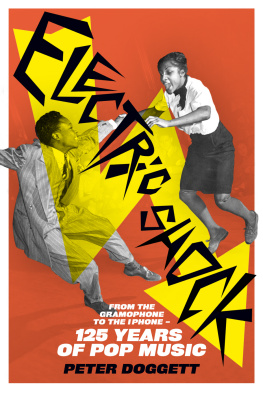All rights reserved. No part of this book may be reproduced in any form by any electronic or mechanical means (including photocopying, recording, or information storage and retrieval) without permission in writing from the publisher.
This book was set in Stone Serif by Westchester Publishing Services. Printed and bound in the United States of America.
Names: Eriksson, Maria. | Fleischer, Rasmus | Johansson, Anna. | Snickars, Pelle, author. | Vonderau, Patrick, author.
Title: Spotify teardown : inside the black box of streaming music / Maria Eriksson, Rasmus Fleischer, Anna Johansson, Pelle Snickars, and Patrick Vonderau.
Description: Cambridge, MA : MIT Press, 2019. | Includes bibliographical references and index.
Identifiers: LCCN 2018011908 | ISBN 9780262038904 (pbk. : alk. paper)
Subjects: LCSH: Spotify. | Music and the Internet. | Sound recording industry.
Classification: LCC ML74.4.S64 S64 2018 | DDC 780.285/4678--dc23 LC record available at https://lccn.loc.gov/2018011908
Contents
List of Figures
Spotify London subway advertisement in November 2016. Photograph by the authors.
Spotify once described itself as a platform to manage ones musicbut should it still be seen as one? Advertisement for the Discover Weekly playlist in the New York City subway in 2016. Photograph by the authors.
Former Swedish prime minister and foreign minister Carl Bildt speaks at the #backaspotify event at the Stockholm Chamber of Commerce on April 22, 2016. Image courtesy of the Stockholm Chamber of Commerce.
An extended but graphically simplified network of some of the most frequent tweeters during the #backaspotify campaign.
Sweden needs fast-growing companies more than they need Sweden. #backaspotifyTweet from Annie Lf, leader of the Swedish Centre Party, on April 15, 2016. Image courtesy of the Centre Party.
#backaspotify and the local production of memes: Vad r problemet? (Whats the problem?), the Swedish prime minister and Social Democrat, Stefan Lfven, asks in a twitter meme from @Rodgronrora.
During the autumn of 2009, Spotify launched its first mobile music app for the Apple iPhone.
A screenshot of the Spotify Premium interface in 2011.
An influence on Spotifys later mood boards, Songzas mobile interface offered activities at different times of the week. Screenshots from 2012.
Self-produced music for research purposes: in 2014, the authors of this book released the album Election Music under the nom de plume Heinz Duthel.
Swedish breakfast recordings were released under the pseudonym Fru Kost (frukost is breakfast in Swedish)self-produced music for research purposes uploaded through the music aggregator Record Union. Notably, the popularity of the song Kaffe (coffee) was mainly due to our multiple preprogrammed bots.
Ad for Spotifys Discover Weekly in the New York subway in 2016. Photograph by the authors.
Aggregation as the facilitating principle behind streaming: online offers made by the music aggregation service Awal. Screenshot provided by authors.
In March 2014, the funk band Vulfpeck released the conceptual album Sleepifywhich contained some five minutes of pure silencein order to crowdfund the Sleepify Tour. Screenshot provided by authors.
Stills from the promotional YouTube video for the Sleepify Tour, with bandleader Jack Stratton asking fans to stream the album on repeat (while sleeping!). Reprinted with permission from Vulfpeck.
Five song loops on Spotify Radio, as listened to by one of our preprogrammed bots. The radio loop began with ABBAs Dancing Queen (in the middle) and repeated the same track an additional five times (during a twenty-four-hour intervention).
Screenshot of Wireshark in action. Black rows indicate failed TCP packet transmissions.
List of actors that were found when we eavesdropped on Spotifys network traffic in May 2017.
Home page of the Spotify desktop client, as seen from a US listener account in May 2017.
Spotifys top eight Genres & Moods categories, as seen from a Swedish account in May 2017.
Spotifys top eight Mood playlists, as seen from a US account in June 2017.
Was the introduction of a nonbinary gender option in the fall of 2016 a token of progressiveness or market-driven appropriateness?
Spotify Rewind: unique artist recommendations as a percentage of each age groups total artist recommendations.
Spotify Rewind: unique artist recommendations for individual bots as a percentage of each bots total artist recommendations.
The interface used to facilitate research in some of the case studies.
Spotify media event, New York, May 20, 2015. Photographs by the authors.
Fiddler in action, sniffing out communication between Spotify and its ad-supplying partners.
Stills from the Songblocker promotion video, uploaded to YouTube during the spring of 2017.
A world map of Spotify job listings, with New York and Stockholm offering the greatest number of positions. Image courtesy by OpenStreetMapContributors.
Screenshot of Spotifys Our Job Categories web page as of June 2017.
Distribution of job postings among different countries, with shading indicating locations with the greatest number of jobs, comparatively.
Acknowledgments
This book and the research on which it is based have benefited from much collaboration. Christopher Kullenberg joined us during the early stages of the project and contributed vitally to one of the chapters in this book. We are deeply indebted to system developer Roger Mhler and the resourceful staff at Humlab, Ume University, especially Johan von Boer, Andreas Marklund, and Fredrik Palm. Their enthusiasm and inventiveness inspired the trajectory of our research and analysis from start to finish and helped to guide the course of our inquiry.
This book also has benefitted from the insights of an extraordinary community of interlocutors. Our thanks to all the professionals in the advertising, digital media, and IT industries who took the time to explain and reflect upon their work and practices and to Mollie Panzner (Ghostery/Evidon) for expert advice on mapping ad tech networks. We would like to thank Jennifer Holt and Lisa Parks for hosting us at the University of California, Santa Barbara, in November 2015, as well as Kristoffer Gansing for inviting us to present Songblocker to an unsuspecting crowd at TransmedialeFestival for Art and Digital Culture 2017 in Berlin. David Hesmondhalgh, Geert Lovink, Bernhard Rieder, Richard Rogers, Christian Sandvig and Mirko Tobias Schaefer provided invaluable advice on legal and ethical matters.
An extensive constellation of colleagues, peers, and friends sustained and enriched this project through its different iterations. In addition to the valuable feedback we gleaned from audiences at the diverse conferences, workshops, and lectures where we presented pieces of the work, we had the good fortune to receive input from Jean-Samuel Beuscart, Joshua Braun, John Thornton Caldwell, Abigail and Benjamin De Kosnik, Andrew Leyshon, Ramon Lobato, Denise Mann, Paul McDonald, Jeremy Wade Morris, Alisa Perren, and Cornelius Puschmann. Somewhat closer to home, we also would like to thank C. F. Helgesson, Sofia Johansson, Hans Kjellberg, Ivy Kunze, Susanna af Leijonhufvud, Johan Lindquist, Anette Nykvist, Christian Rossipal, and Jonas Andersson Schwarz, as well as Francis Lee, Steve Woolgar, and the Algorithm Study Network for their curiosity, inspiration, and suggestions. We are especially grateful to Holger Schulze and Pit Schultz for discussing ideas in the earliest phase of the project and to Dan McHale for his generous hospitality during our stay in San Francisco.


